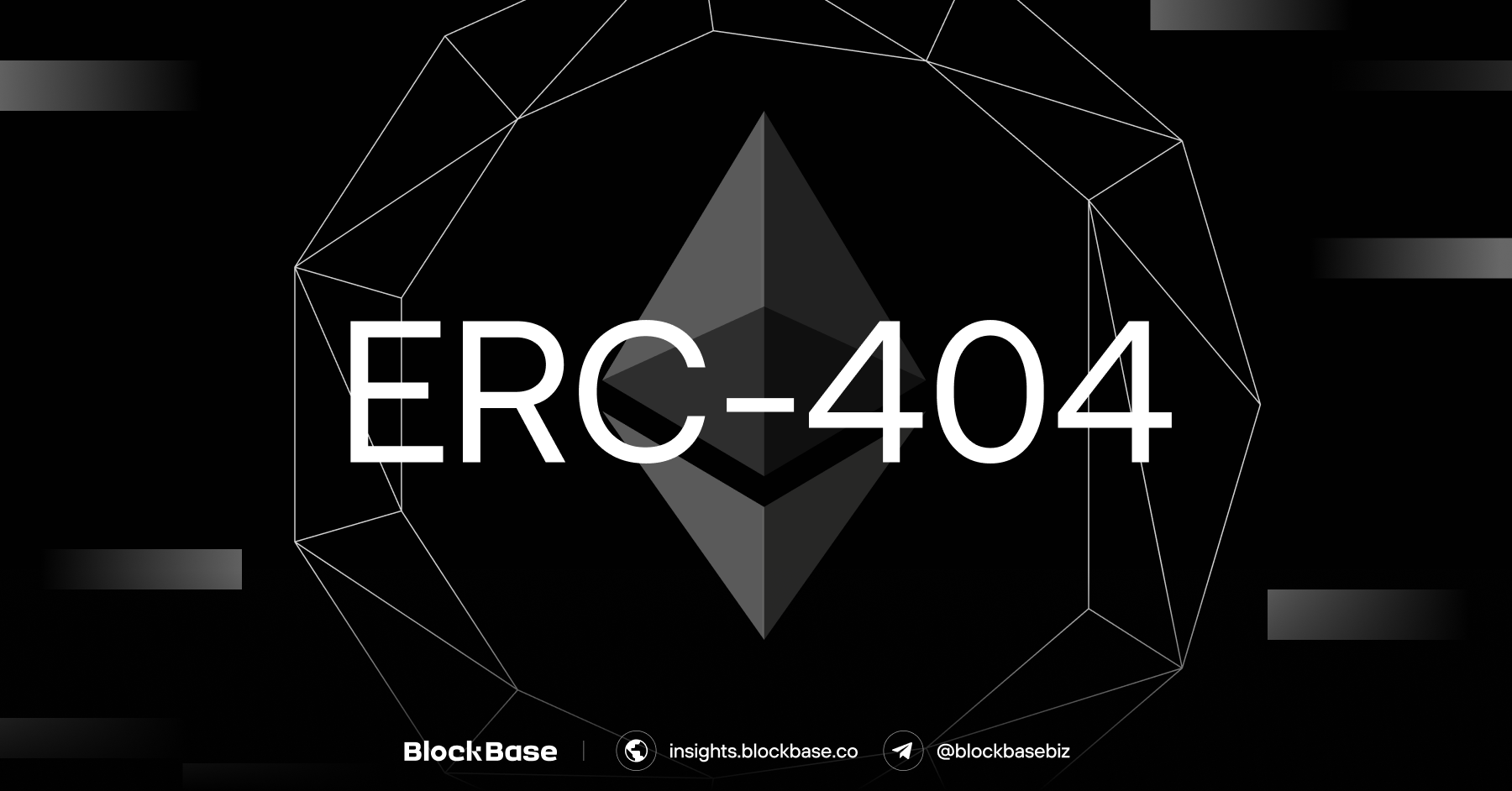1. Introduction
A crucial aspect of Ethereum’s ecosystem is the standardization of tokens, facilitating interoperability and widespread use. Two primary token standards, ERC-20 and ERC-721, have played distinct roles in shaping the landscape. ERC-20 tokens are fungible assets enabling seamless transactions. On the other hand, ERC-721 tokens have revolutionized the concept of non-fungible tokens (NFTs), providing unique digital assets with individual ownership and provenance.
Despite their respective achievements, both ERC-20 and ERC-721 standards have inherent limitations. While ERC-20 tokens are highly efficient for transferring value, they cannot be individually unique. On the other hand, ERC-721 tokens excel in uniqueness and ownership representation but need help with efficient and divisible trading.
A few weeks ago, the Ethereum community introduced ERC-404, an experimental token standard that aims to break the traditional boundaries between fungible and non-fungible tokens. Developed by the Pandora team, ERC-404 represents a pioneering effort to combine the characteristics of ERC-20 and ERC-721.
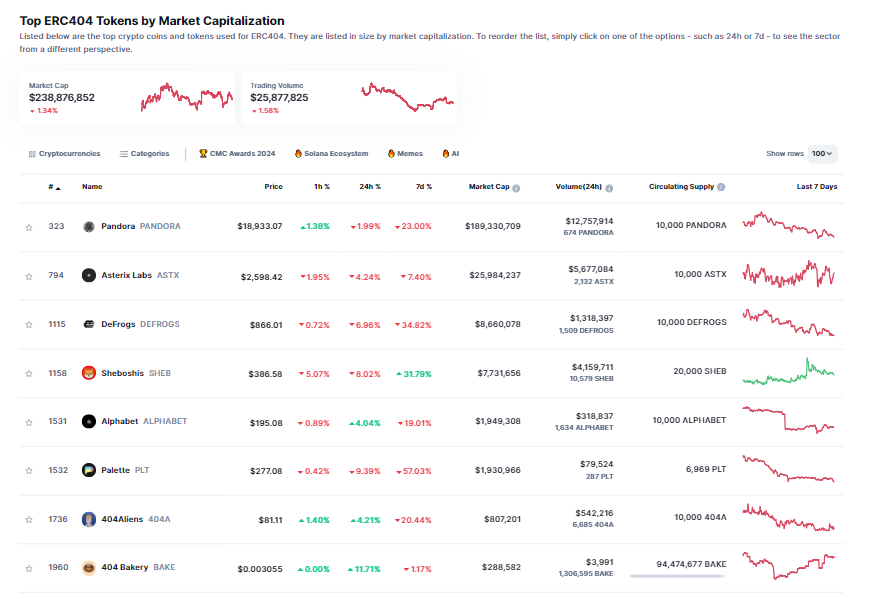
2. Understanding ERC-404
2.1. Overview
ERC-404 is an experimental token standard that merges the functionalities of ERC-20 and ERC-721, paving the way for a new class of tokens. ERC-404 aims to bring liquidity and fractionalization into the NFT market and offer versatile use cases.
The development of ERC-404 is attributed to the Pandora Team, pioneers in creating this innovative token standard. This experimental endeavor has given rise to the first token based on ERC-404, known as Pandora ($PANDORA).
2.2. Advantages and disadvantages of ERC 404
Advantages
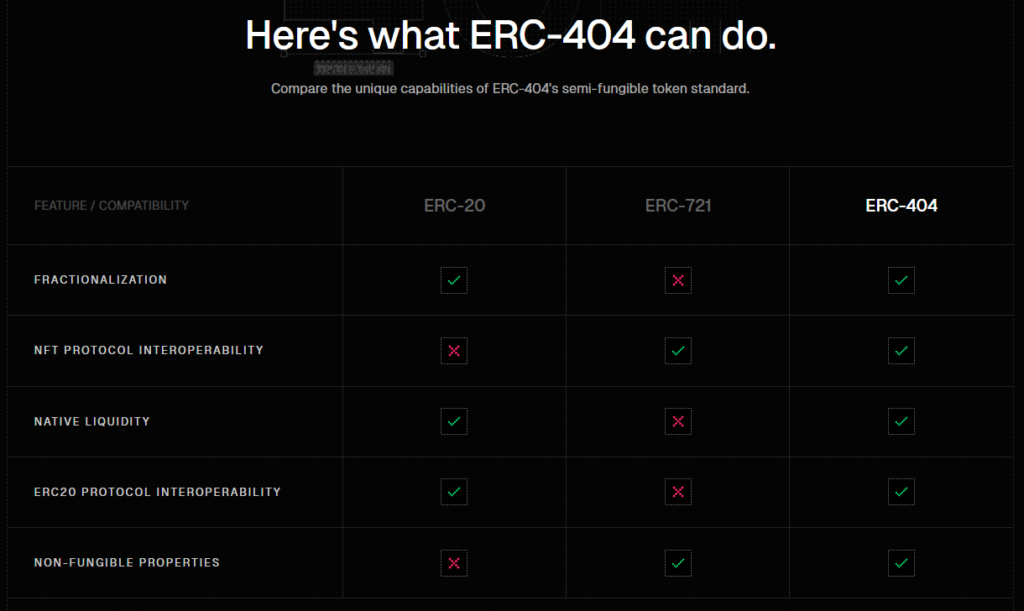
- Liquidity Enhancement
- The integration of fungible and non-fungible traits allows ERC-404 tokens to be traded on DEXs like Uniswap, where users can experience a dynamic and liquid market.
- DeFi protocols may explore integration with ERC-404 to leverage its unique features for increased liquidity and versatility.
- Fractionalization
- ERC-404 enables fractional transfers through token mints and burns, providing users with the ability to own fractional parts of NFTs seamlessly.
- ERC-404 integrates fractionalized NFTs into DeFi protocols, enabling financial applications like lending, borrowing, and yield farming with NFTs.
⇒ The ERC-404 token standard introduces native fractionalization, allowing NFTs to be owned fractionally and adding a layer of liquidity to these typically illiquid assets. The distinctive features of ERC-404 have the potential to strengthen the NFT-Fi sector and introduce a greater influx of liquidity into the cryptocurrency market.
Disadvantages of ERC-404
- Experimental Stage
As an experimental standard, ERC-404 is still in the early stages of development, with potential unknown flaws. - Lack of Formal Standardization
Unlike ERC-20 and ERC-721, ERC-404 has not undergone the formal Ethereum Improvement Proposal (EIP) process, raising concerns about its security and compatibility.
2.3. How ERC-404 works
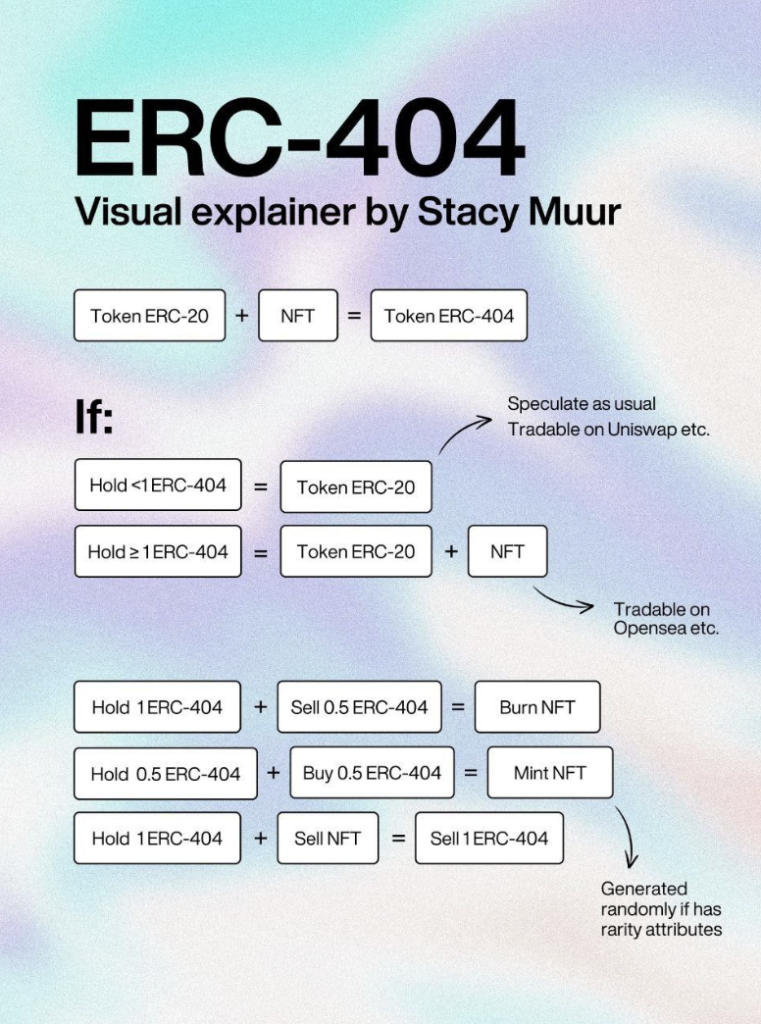
- Each ERC-404 token is linked to a specific non-fungible token (NFT).
- When a user buys an ERC-404 token, a corresponding NFT is minted and connected to their wallet. The ERC-20 token only represents an NFT when it is a whole token.
- Users have the flexibility to trade or transfer fractions of ERC-404 tokens, facilitating shared ownership of the associated NFT.
- For example, if someone possesses one ERC-404 token representing an NFT, they own the entire NFT. When transferring 0.5 tokens, partial ownership of the linked NFT is retained. Fractional sales of the ERC-404 token involve the burning of the linked NFT.
- The new NFT is minted at random and could have variable attributes/ rarity.
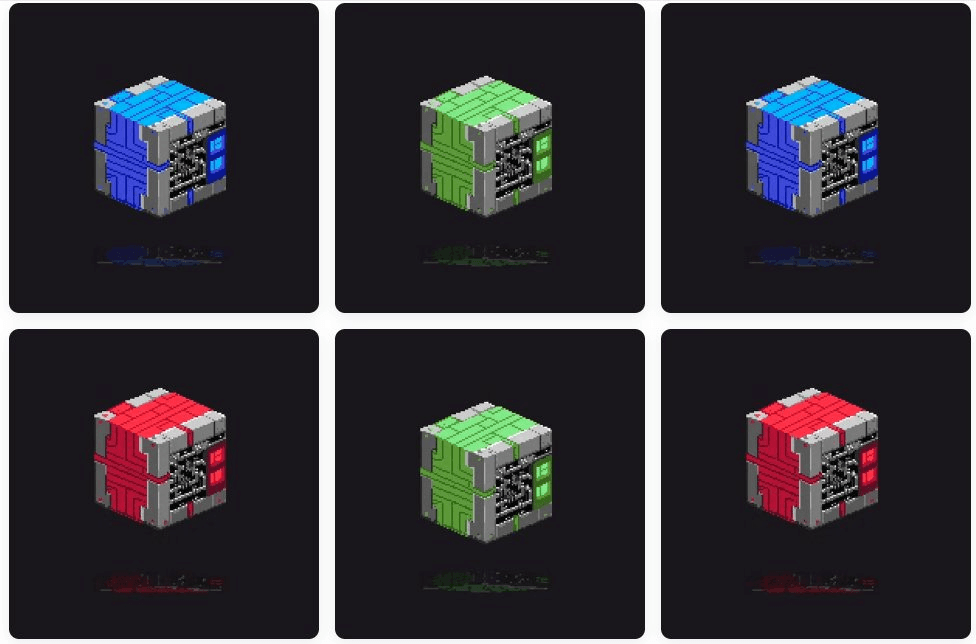
Rarities
Green boxes: approximately 39.45%
Blue boxes: approximately 23.44%
Purple boxes: approximately 19.53%
Orange boxes: approximately 11.72%
Red boxes: approximately 5.86%
3. Variations of ERC-404
3.1. μtoken
µ-Tokens (Floor protocol) are ERC-20 tokens representing fractional ownership of NFTs within specific collections on Ethereum. For example, users deposit an NFT into Floor Protocol and receive 1,000,000 µ-Tokens tied to that NFT collection. Each µ-Token represents fractional ownership, valued by the collection’s floor price. They can trade µ-Tokens like traditional cryptocurrencies, enhancing liquidity and reducing costs.

As evident, µ-Tokens have their limitations and serve as a solution until the emergence of ERC-404. The question of whether µ-Tokens will become obsolete, leading to the demise of the Floor Protocol, remains uncertain. Currently, many prominent NFT collections continue to rely on the ERC-721 standard.
Freelaunch, the founder of Floor Protocol, is currently developing a new NFT collection following the ERC-404 standard called Underworld, demonstrating their support and alignment with this emerging trend.
3.2. ERC-1111
The ERC-1111, which was introduced by the PFP Asia team, with a focus on improving liquidity, enables flexible conversions between ERC-20 and ERC-721, allowing each NFT to be fractionated into 10,000 tokens. Both standards, ERC-1111 and ERC-404, incorporate elements from ERC-20 and ERC-721. However, the primary difference lies in the ERC-1111’s capability to integrate the concept of NFT rarity during the minting process.
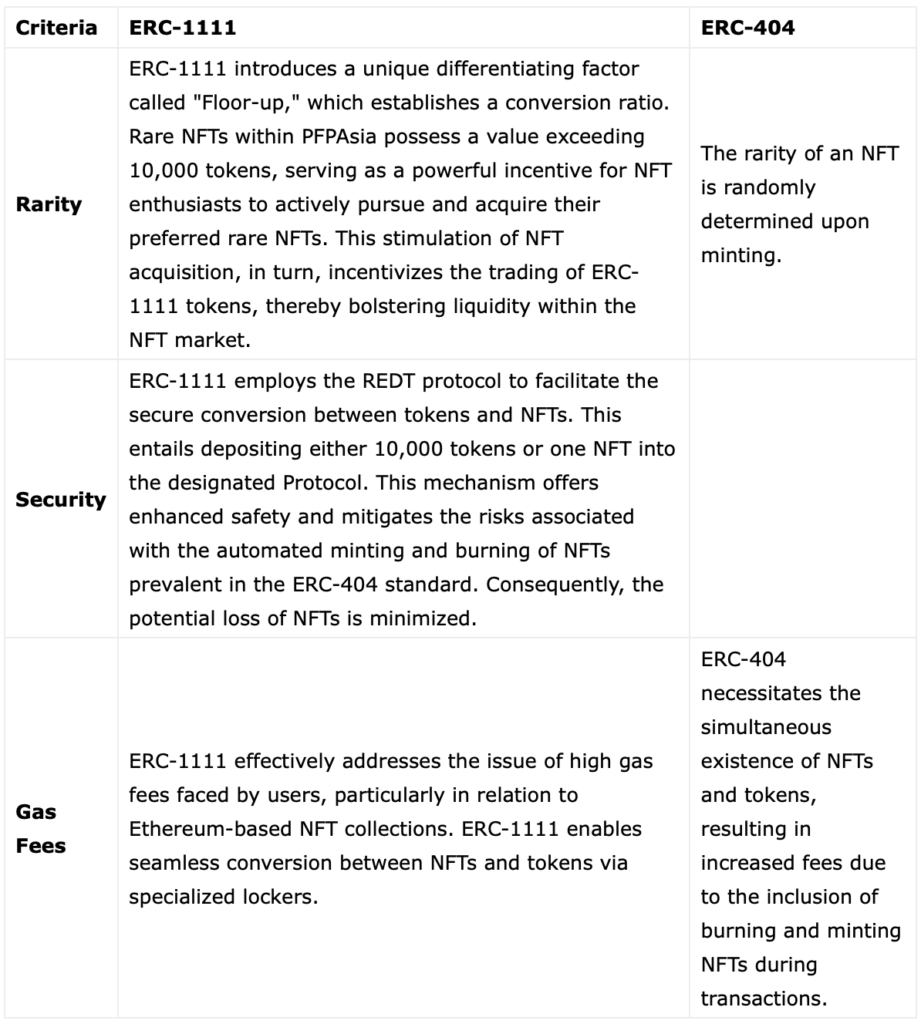
In summary, the utilization of ERC-1111 offers distinct advantages over ERC-404, including the integration of NFT rarity during minting, enhanced security through the REDT protocol, and alleviation of gas fee concerns.
3.3. DN-404
The DN-404 token standard was introduced on February 12th by Ethereum developers as an improvement over the ERC-404, with the primary goal of reducing gas fees by 20% to alleviate pressure on the Ethereum network.

Both ERC-1111 and DN-404 have also not undergone a formal audit.
4. Conclusion
Despite having not undergone an official audit and receiving total recognition, the ERC-404 initiative is committed to guaranteeing the strength of the proposal and addressing the challenges of incorporating these token standards.
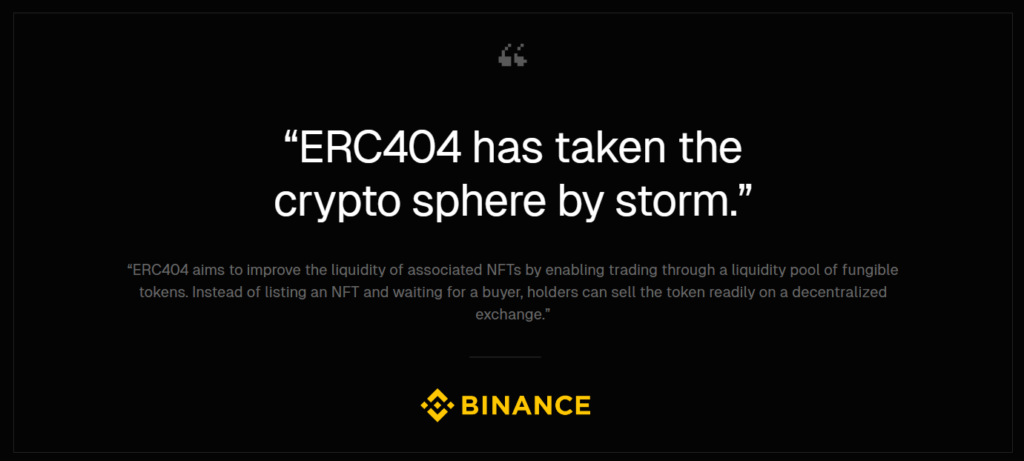
ERC-404 has also gained support from Peapods Finance, Wasabi Protocol, and Binance Web3 Wallet.
We can expect ongoing improvements and refinements to ERC-404 in the future as developers explore enhancements and address specific use cases.
The information provided in this article is for reference only and should not be taken as investment advice. All investment decisions should be based on thorough research and personal evaluation.


